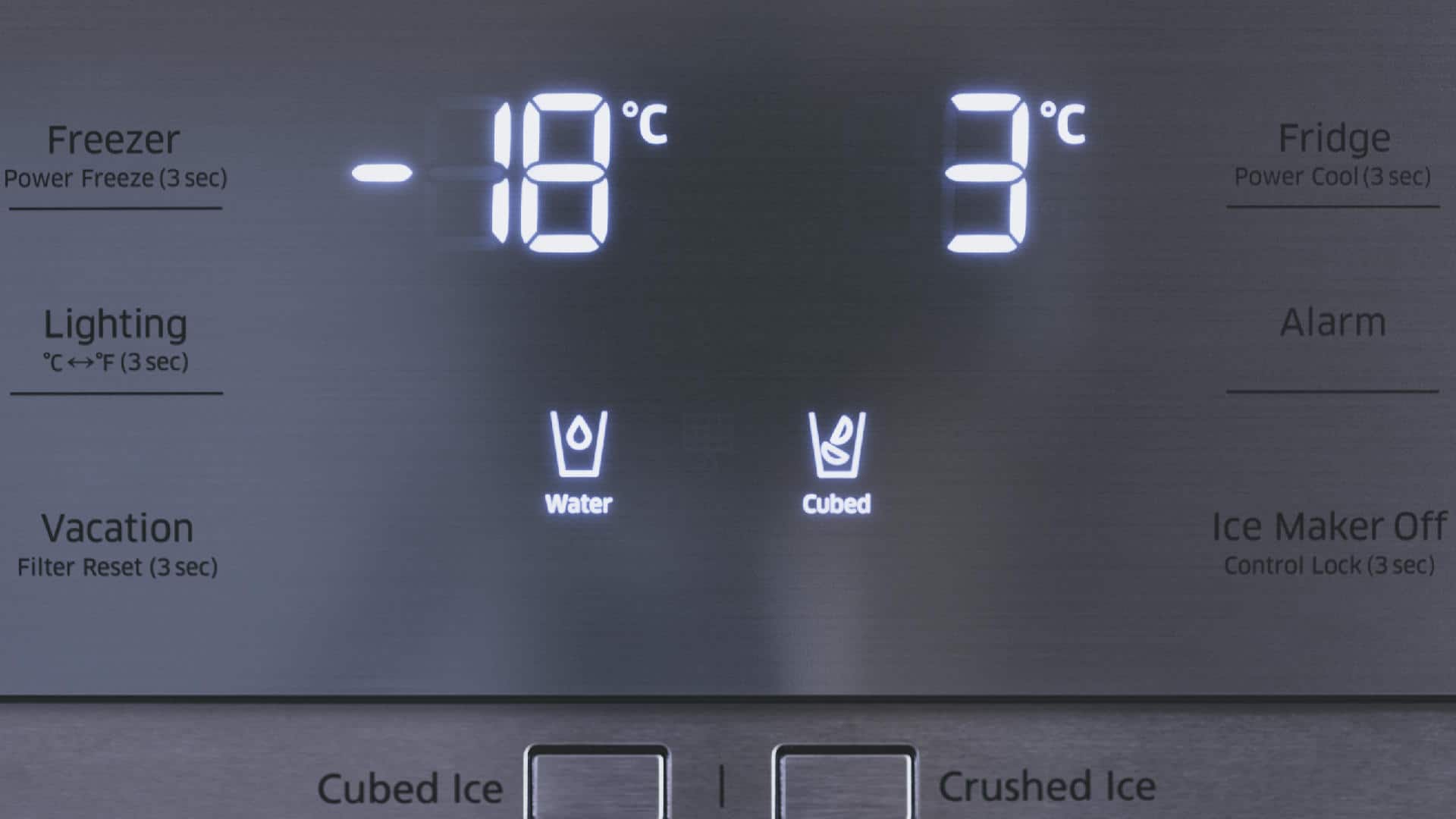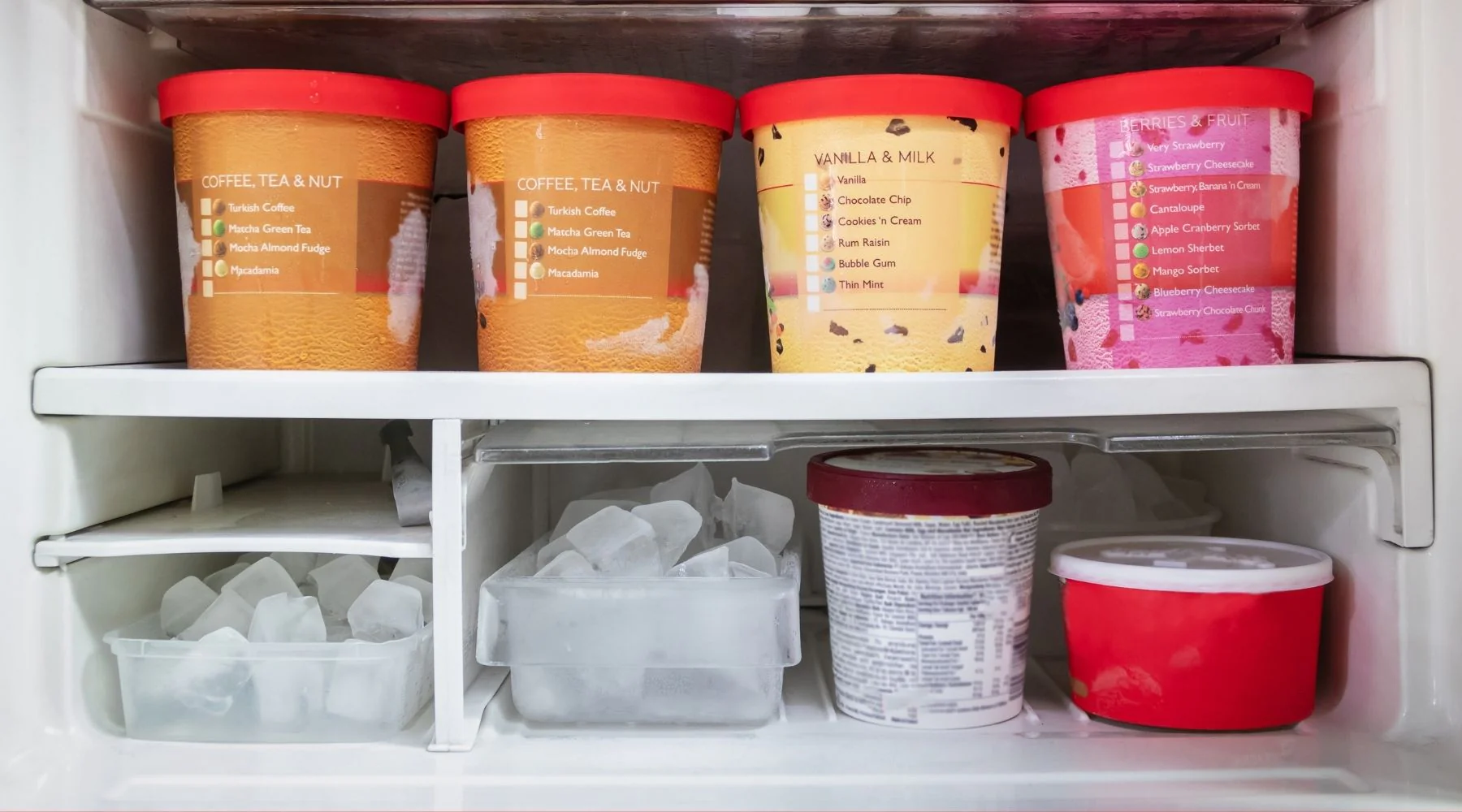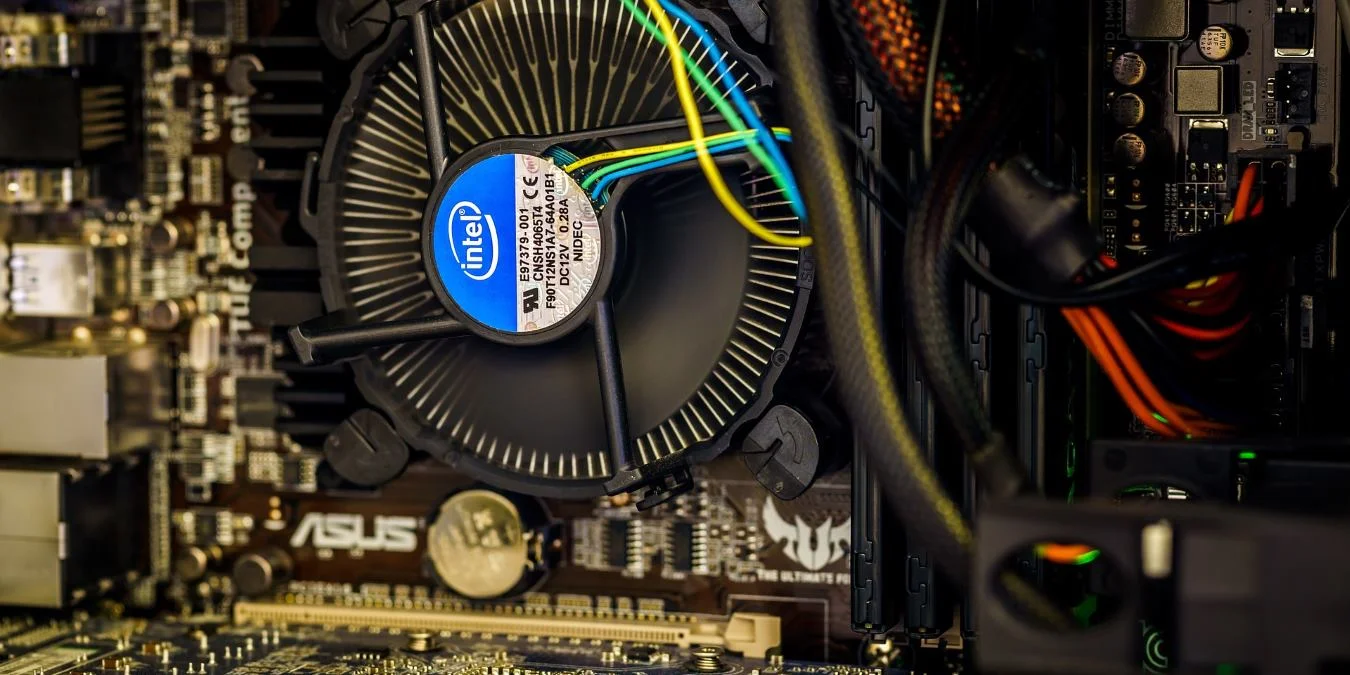Home>Home, Lifestyle & DIY>LG Freezer Temperature Guide: Finding The Perfect Setting For Optimal Performance


Home, Lifestyle & DIY
LG Freezer Temperature Guide: Finding The Perfect Setting For Optimal Performance
Modified: February 28, 2024
Discover the ideal freezer temperature settings for optimal performance with our LG Freezer Temperature Guide. Keep your home running smoothly with our Home, Lifestyle & DIY tips.
(Many of the links in this article redirect to a specific reviewed product. Your purchase of these products through affiliate links helps to generate commission for Temperatures.com, at no extra cost. Learn more)
Table of Contents
Understanding the Ideal Freezer Temperature
The ideal freezer temperature is a crucial factor in ensuring the longevity and quality of your frozen goods. Maintaining the correct temperature not only preserves the flavor and texture of your food but also plays a significant role in energy efficiency. The recommended temperature for a freezer is 0°F (-18°C) or lower. This temperature range is optimal for keeping food safe from bacterial growth while preventing freezer burn.
Freezers are designed to operate at sub-zero temperatures to halt the growth of bacteria and slow down enzymatic reactions that can cause food spoilage. By maintaining a consistent temperature of 0°F or lower, you can effectively preserve the quality and safety of your frozen foods.
It's important to note that fluctuations in temperature can compromise the integrity of your frozen items. For instance, if the temperature rises above 0°F, the risk of bacterial growth increases, potentially leading to foodborne illnesses. On the other hand, excessively low temperatures can affect the texture and flavor of certain foods, such as ice cream becoming overly hard and difficult to scoop.
Understanding the ideal freezer temperature also involves recognizing the impact of external factors. The frequency of door openings, the amount of food stored, and the location of the freezer within your home can all influence its temperature. Additionally, the type and age of the freezer can affect its ability to maintain the recommended temperature consistently.
By comprehending the significance of maintaining the ideal freezer temperature, you can take proactive measures to ensure that your frozen foods remain safe and of high quality. This knowledge empowers you to make informed decisions regarding the storage and organization of your freezer, ultimately contributing to a more efficient and effective home food storage system.
Read more: Optimal Freezer Temperature: How To Set And Maintain The Perfect Temperature For Your Freezer
Factors Affecting Freezer Performance
Several factors can significantly impact the performance of a freezer, influencing its ability to maintain the ideal temperature and preserve the quality of frozen goods. Understanding these factors is essential for optimizing the functionality of your freezer and ensuring the long-term viability of stored food items.
-
Location and Environment: The placement of the freezer within your home environment can influence its performance. For instance, placing the freezer in a hot or humid area, such as near a stove or dishwasher, can cause it to work harder to maintain the desired temperature. This increased workload can lead to higher energy consumption and potential temperature fluctuations.
-
Frequency of Door Openings: Each time the freezer door is opened, warm air enters the unit, causing the temperature to rise momentarily. Frequent door openings, especially for extended periods, can disrupt the internal temperature, leading to fluctuations that may compromise the quality of the stored food.
-
Overcrowding: Overfilling the freezer with an excessive amount of food can obstruct proper airflow, hindering the unit's ability to maintain a consistent temperature. Additionally, overcrowding can lead to uneven cooling, potentially resulting in certain areas of the freezer being colder than others.
-
Type and Condition of the Freezer: The type and age of the freezer can impact its performance. Older freezers may struggle to maintain the ideal temperature, especially if they have worn door seals or outdated insulation. Additionally, the design and efficiency of the freezer, such as the presence of self-defrosting features, can influence its ability to sustain optimal temperatures.
-
Maintenance and Defrosting: Regular maintenance, including cleaning the coils and ensuring proper defrosting, is crucial for preserving the efficiency of the freezer. Accumulated frost can insulate the evaporator coils, reducing their ability to extract heat from the unit, which can lead to temperature fluctuations and increased energy consumption.
By acknowledging these factors and their impact on freezer performance, you can take proactive measures to optimize the functionality of your freezer. This understanding empowers you to make informed decisions regarding the placement, organization, and maintenance of your freezer, ultimately contributing to the preservation of your frozen goods and the efficient operation of the appliance.
Tips for Finding the Perfect Freezer Temperature
-
Utilize a Freezer Thermometer: Invest in a reliable freezer thermometer to accurately monitor the internal temperature of your freezer. Place the thermometer in a visible location within the freezer to easily check the temperature without prolonged door openings.
-
Allow for Temperature Stabilization: After adjusting the freezer temperature, allow sufficient time for the unit to stabilize before rechecking the temperature. This ensures that the reading reflects the actual internal temperature rather than a temporary fluctuation.
-
Avoid Drastic Temperature Changes: Gradually adjust the freezer temperature in small increments, allowing time between adjustments for the unit to reach the new setting. This approach prevents drastic temperature changes that can impact the quality of the stored food.
-
Regularly Calibrate the Freezer: Periodically calibrate the freezer thermometer to verify its accuracy. This simple step ensures that the thermometer provides reliable temperature readings, allowing you to make precise adjustments as needed.
-
Consider External Factors: Take into account external factors that may influence the freezer temperature, such as seasonal changes or variations in room temperature. Adjust the freezer settings accordingly to compensate for these external influences.
-
Optimize Freezer Organization: Arrange the contents of the freezer strategically to promote proper airflow and even cooling. Avoid overfilling the freezer, and utilize storage containers to maintain a well-organized and efficient storage space.
-
Monitor Door Openings: Be mindful of the frequency and duration of door openings. Minimizing unnecessary openings and ensuring swift retrieval of items can help maintain a consistent internal temperature.
-
Regular Maintenance: Keep the freezer well-maintained by cleaning the interior, checking and replacing worn door seals, and promptly addressing any issues that may affect its performance.
-
Seek Manufacturer Guidelines: Refer to the manufacturer's guidelines for specific recommendations regarding the optimal temperature range for your freezer model. Manufacturers often provide valuable insights into maximizing the appliance's performance.
-
Consult with Professionals: If you encounter persistent temperature issues or uncertainties about the optimal settings for your freezer, consider consulting with appliance professionals or technicians for expert guidance.
By implementing these tips, you can effectively navigate the process of finding the perfect freezer temperature, ensuring that your frozen goods remain safely preserved while optimizing the energy efficiency and longevity of your freezer.
Adjusting the Freezer Temperature for Different Needs
Adapting the freezer temperature to suit specific needs and varying food items is a strategic approach that optimizes the preservation and quality of frozen goods. Understanding how to adjust the freezer temperature for different requirements empowers individuals to customize their storage conditions effectively.
Freezing Fresh Produce
When freezing fresh produce, such as fruits and vegetables, a slightly higher freezer temperature may be beneficial. Setting the freezer to around 0°F (-18°C) allows for the preservation of the natural texture and flavor of the produce. This temperature range prevents the formation of large ice crystals, which can compromise the cellular structure of the produce, ultimately preserving its quality.
Long-Term Storage
For long-term storage of items such as meats, seafood, and prepared meals, a lower freezer temperature, ideally at the lower end of the recommended range, is advisable. A temperature of -10°F to -20°F (-23°C to -29°C) helps maintain the quality of these items over extended periods. The lower temperature slows down enzymatic reactions and bacterial growth, effectively preserving the texture, flavor, and nutritional value of the stored foods.
Ice Cream and Frozen Desserts
When storing ice cream and other frozen desserts, a slightly warmer freezer temperature, around -5°F to 0°F (-21°C to -18°C), is suitable. This temperature range prevents the desserts from becoming overly hard, making them easier to scoop and enjoy. It also helps maintain the creamy texture and prevents the formation of ice crystals, ensuring a delightful frozen treat.
Quick Freezing
For rapid freezing of items, such as homemade soups, sauces, or excess produce, temporarily lowering the freezer temperature to its coldest setting can expedite the freezing process. Once the items are adequately frozen, the temperature can be adjusted back to the recommended range for long-term storage. Quick freezing helps preserve the freshness and quality of the items by minimizing the formation of large ice crystals, which can degrade the texture and flavor.
Customized Zones
Some modern freezers offer the flexibility of customized temperature zones within the unit. This feature allows users to designate specific areas for different temperature settings, accommodating diverse storage needs within a single appliance. For instance, a section can be set to a slightly higher temperature for the storage of frozen produce, while another section can maintain a lower temperature for long-term storage of meats and seafood.
By adjusting the freezer temperature to align with specific storage requirements, individuals can effectively preserve the quality and freshness of a diverse range of frozen goods. This tailored approach to temperature management ensures that each item is stored under optimal conditions, contributing to a well-organized and efficient freezer storage system.
Read more: Optimal Temperature Settings For A Crock Pot
Maintaining Optimal Freezer Performance
Consistently maintaining optimal freezer performance is essential for preserving the quality and safety of frozen foods while maximizing energy efficiency. To achieve this, regular attention to various aspects of freezer maintenance and operation is crucial.
Clean and Defrost Regularly
Regular cleaning of the freezer interior, including shelves, drawers, and walls, helps prevent the buildup of frost and ice, which can impede airflow and insulation. Additionally, defrosting the freezer when ice accumulates beyond a thin layer is vital for efficient operation. Excessive frost can strain the freezer's cooling system, leading to increased energy consumption and potential temperature fluctuations.
Check and Replace Door Seals
Worn or damaged door seals can allow warm air to enter the freezer, leading to temperature fluctuations and increased energy usage. Periodically inspect the door seals for any signs of wear or damage, and promptly replace them if necessary to ensure a tight seal and optimal insulation.
Organize and Label Contents
Maintaining a well-organized freezer not only facilitates easy access to items but also promotes proper airflow and even cooling. Utilize storage containers and labels to categorize and identify frozen foods, reducing the time the freezer door remains open during retrieval and minimizing temperature fluctuations.
Monitor Temperature and Airflow
Regularly monitor the internal temperature of the freezer using a reliable thermometer and ensure that the airflow vents are unobstructed. Proper airflow is essential for maintaining consistent temperatures throughout the freezer, preventing localized freezing or thawing of items.
Address Issues Promptly
If you notice any unusual sounds, fluctuations in temperature, or signs of frost accumulation, address these issues promptly. Timely attention to potential problems can prevent further complications and ensure the continued optimal performance of the freezer.
Energy-Efficient Practices
Implement energy-efficient practices, such as minimizing the frequency and duration of door openings, allowing hot foods to cool before placing them in the freezer, and avoiding overfilling the unit. These practices contribute to stable temperatures and reduced energy consumption.
Professional Maintenance
Consider scheduling professional maintenance for your freezer, especially if you observe persistent issues or if the appliance is aging. Professional technicians can conduct thorough inspections, identify potential issues, and perform necessary repairs or adjustments to optimize the freezer's performance.
By consistently implementing these maintenance practices, you can ensure that your freezer operates at its best, preserving the quality of frozen foods and promoting energy efficiency. This proactive approach to freezer maintenance contributes to a reliable and effective home food storage system.












